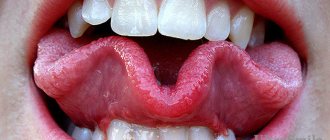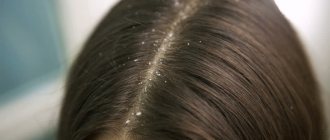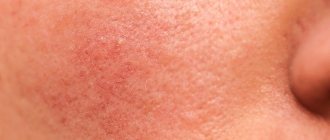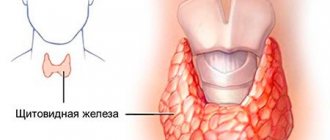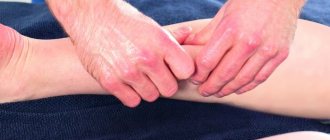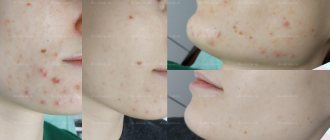Modern cosmetic procedures do an excellent job of treating age spots. At the same time, patients can choose tactics to their liking - be it hardware IPL or laser resurfacing procedures or injections of meso-cocktails with ascorbic acid.
Pigmentation can be present in a person from birth or acquired over the years.
Pigment spots do not harm the body as a whole, but they greatly disturb the aesthetics of the face. Previously, hyperpigmentation was characterized by the stereotypical term “liver spots,” and people with it on the face were considered sick in the hepatobiliary system. Indeed, the defect can arise from problems with the liver, but this is far from the only reason.
Here are a few reasons for the appearance of pigmentation:
- changes in the functioning of the thyroid gland, dysfunction of the thyroid gland;
- changes in the functions of the gallbladder and liver;
- excessive exposure to ultraviolet rays;
- hormonal imbalance in a woman’s body – pregnancy, taking hormonal medications;
- post-traumatic and post-burn factors;
- some skin diseases that are accompanied by low levels of melanin in some areas of the skin;
- Some medications, drugs and cosmetics can also contribute to the development of age spots.
How to deal with hyperpigmentation
Today there are many methods that will help even out skin color, but the purpose of one or another method depends on the severity of the problem and goals.
Unfortunately, if a person is predisposed to hyperpigmentation, then making the skin look young and even in color is quite difficult.
In cosmetology they use:
- special masks and creams with whitening effect;
- in some cases, peeling or grinding (acid or laser) is indicated;
- hardware IPL procedures.
Hardware methods are the most effective way to remove the appearance of pigment on the skin.
Depigmentation in children
Uneven coloration of the epidermis in children often appears from the moment of their birth. There are cases when the problem arises as the child grows older and affects only certain areas of the body. Depigmentation of the epidermis is, first of all, a cosmetic defect, which causes the appearance of complexes and internal clamps.
Since children's skin has a pale tint, parents cannot always detect pathology from the first days of life. They should monitor the condition of the baby’s epidermis and promptly consult with a pediatrician and dermatologist.
Types of skin pigmentation disorders
Lentiginosis.
A brownish pigmented spot on the skin that is the result of increased melanin deposition and an increased number of melanocytes. Color can vary from light brown to black. Solar lentigo (caused by sun exposure) typically appears as multiple lesions.
Keratosis
Formation of horny tissue. May be flat or raised. Only colored flat lesions will respond to IPL light therapy.
"Coffee" stains
The lesion has a characteristic uniform shade of café au lait, from light to dark brown. May appear as a single spot or multiple spots. They may be present at birth but usually develop in early childhood and increase in size with age
Hemosiderin
Hyperpigmentation, which is usually a consequence of chronic venous insufficiency due to post-inflammatory pigmentation after sclerotherapy.
Becker's nevus
A hyperpigmented, slightly raised area, light to dark brown nevus with hair.
Nevus Otta/Itta
Limited, unilateral, mottled, blue to brown lesions affecting the skin, sclera, and mucous membranes. They develop predominantly on dark skin.
Freckles
Small pigment spots of a reddish, flesh-colored or brownish color, localized on the cheeks and nose, less often - throughout the face, back, and arms. Caused by genetic predisposition.
A separate item should be highlighted such a phenomenon as rosacea . Some patients mistakenly classify it as hyperpigmentation, but this is not entirely correct. Rosacea is an extensive vascular network of dilated capillaries, having a reddish or bluish tint. Like pigment spots, it is successfully eliminated using hardware procedures, but their mechanism of action differs from the correction of pigmented melanin formations.
Important! Hyperpigmentation caused by pathological processes in the body should be subject to systemic therapy. For defects caused by liver disease, hormonal imbalance and other health problems, you should contact a gastroenterologist-hepatologist, endocrinologist and other specialized doctors.
Cosmetological correction is most relevant after the therapy has been completed, when the cause of the defect has been eliminated.
Forms of depigmentation of the epidermis
The forms of skin pigmentation disorders are: albinism; vitiligo; idiopathic or guttate hypomelanosis; Ito's hypomelanosis. Congenital absence of melanocytes is hereditary. Features of the pathology are pronounced achromia or hypochromia, white hair, translucent irises, photophobia, pinkish skin tone. Albinism does not cause skin cancer in 90-95% of cases.
Vitiligo is a skin disease that causes lightened spots on the neck, upper and lower extremities. They can grow, merge and spread throughout the body. More often, white spots are localized on the knees, elbows, near the mouth and eyes.
The main cause of the disease is considered to be a deficiency of melanocytes. Other factors that influence the appearance of pathology include: disorders of the central nervous system; reduced immunity (if the cells responsible for pigmentation are damaged, vitiligo may develop); self-destruction of the coloring matter. Scientists have not yet fully figured out whether the disease is transmitted from parents to children or not.
Idiopathic hypomelanosis can be acquired or congenital. Typically, such depigmentation of the epidermis appears in children and adolescents. The spots have different shapes, and very rarely have clear contours. Guttate hypomelanosis is observed in 60-70% of cases in women over thirty years of age. People with fair skin get sick more often than people with dark skin.
Depigmentation increases after prolonged sun exposure. The first sign of pathology is light lesions on the legs. The spots are usually oval or round in shape (diameter reaches 1-1.5 centimeters). If the disease progresses, they appear on the chest, abdomen and back. The neck and face often remain outside the risk zone (up to 5% of cases have been recorded when guttate hypomelanosis was localized on the skin of the face and neck).
Ito's hypomelanosis is genetically transmitted. Symptoms of the disease usually appear in infancy. Signs of pathology: wavy and zigzag stripes on the epidermis; spots have different sizes; chaotic localization of clarified areas. During adolescence, pigment elements become smaller, and sometimes they disappear completely. Ito's hypomelanosis is quite often accompanied by a congenital malformation.
Sometimes people experience other forms of depigmentation: piebaldism (partial albinism, which is a rare autosomal dominant pathology); Bourneville disease (a rare genetic pathology, the peculiarity of which is damage to the central nervous system, skin damage, and the presence of hamartomas in internal organs); phenylketonuria (a disorder of amino acid metabolism causes depigmentation of the dermis and a profuse rash).
The best effect
We offer our patients procedures using the LumenisM22 IPL . The minimally invasive nature of the procedures performed on the LumenisM22 IPL guarantees a painless and fast recovery.
If a person has dark spots on the skin, you need to be especially attentive to yourself, constantly monitoring the proper care and protection of the epidermis. With the arrival of the beach season, do not forget that fair skin will always make a girl look a couple of years younger, so you should not exhaust your body under the hot rays of the sun, once again putting your skin at risk.
Pigmentation. Top articles:
- How to quickly get rid of age spots on the face?
- Care after the pigmentation removal procedure on Lumenis M22
- Photorejuvenation procedure on Lumenis M22
- Treatment of pigmentation on the face
- Laser removal of facial pigmentation
- Laser photorejuvenation
Telephone consultation is always free!
Leave your contact, we will tell you everything and offer a discount!
Send
Diagnostics
Basically, pigmentation disorders do not pose a particular danger to the health and life of patients and only cause psychological discomfort from a cosmetic defect. However, if the affected areas are injured or exposed to ultraviolet radiation, melanomas can develop into malignant tumors.
Therefore, when age spots appear, it is necessary to undergo a comprehensive examination and determine the cause of their occurrence.
Diagnostics consists of:
- In external visual examination of the skin.
- In collecting anamnesis, which is often not limited to interviewing the patient, but also concerns his immediate family.
- In a dermoscopic examination, in which a device is used to repeatedly magnify and detail the pathological area of the skin.
- In computer diagnostics, which provides the study of affected areas and their comparison with reference samples.
- In histological analysis of tissue sections.
Based on the data obtained, treatment tactics are selected and internal medications are prescribed, as well as external means, for example, the use of photoprotective ointments, peelings, laser resurfacing and other methods of hardware therapy.
Table of contents
- Etiology and pathogenesis
- Clinical manifestations
- Principles of treatment
Deep pigmentation is a congenital or acquired hypermelanosis, in which the bulk of excess pigment lies in the dermal layer of the skin.
In our company you can purchase the following equipment for removing deep pigmentation:
- M22 (Lumenis)
- Fraxel (Solta Medical)
Causes of age spots on the body
The mechanism is simple - melanocytes participate in tissue healing, help rapid regeneration, and stop oxidation from the effects of free radicals. However, “working” on a certain place, they at the same time significantly darken it, which is why a stain is formed.
Problems with improper redistribution of melanin can arise with long-term use of certain medications. In the process of treating one imperfection, a person also earns an additional one - ugly darkened or light areas. Antibiotics and oral contraceptives also sometimes cause different types of darkening of the surface of the dermis.
Anti-age drugs
Curacen Essence (20 fl x 2 ml)
Laennec – solution for injection
Bb Laboratories – Serum “Arcanum”
Premium set “Ideal facial skin. Healthy tone"
Hair and eye coloring
Few people know that the color of the iris also directly depends on the amount produced, the depth of occurrence and the total mass of the main coloring pigment. The shade of the iris becomes darker when there is more melanin in the body and vice versa.
The situation with hair is approximately the same; the lighter it is, the fewer compounds are produced. Over the course of life, due to various internal and external circumstances, its release may intensify or subside due to various pathological or physical phenomena.
Face and body
There are a huge number of different reasons why skin hyperpigmentation appears. It can occur not only on the surface of the face, but also on the arms, back, legs, and abdomen. This may be due to genetics, various autoimmune disorders, excessive uncontrolled exposure to ultraviolet rays, insurmountable external circumstances, for example, the climatic characteristics of the region of residence, the environmental component, smoke or dust in cities.
Darkening on the stomach or back, on the arms or legs can appear after an inflammatory process in the epidermis. For some, insect bites cause light or dark areas of varying sizes that last a long time. Why is this happening? There are many prerequisites, they are worth discussing separately.
Principles of treatment
Deep pigmentation does not respond well to external treatment methods, since the pigment lies quite deep in the skin - and it is extremely difficult to influence it from the outside. Whitening agents such as hydroquinone, tranexamic or azelaic acid can have a certain effect in some conditions (for example, melasma). There is evidence of the benefits of chemical peels, but you should be extremely careful not to cause even more pigmentation in the treated area.
Deep pigmentation is successfully treated with hardware methods - intense pulsed light (IPL) and lasers. The operating principle IPL therapy is based on selective photothermolysis - the absorption of light radiation energy by melanin with the subsequent destruction of unwanted pigment. For more precise exposure and prevention of heating of the surrounding skin, the IPL module of the M22 device from Lumenis uses a set of light filters. Each of these filters cuts off the wavelength range most suitable for a certain pigment depth and phototype.
If the pigment lies very deep, intense pulsed light may not be effective enough - in this case, non-ablative fractional photothermolysis is recommended Fraxel and M 22 ResurFX devices . Fraxel includes a 1550 nm erbium laser to work at the dermal level up to 1400 µm (1.4 mm) deep, as well as a 1927 nm thulium laser to work at the epidermal level up to 210 µm (0.21 mm). ResurFX uses one wavelength - 1565 nm, but this module can be combined in the M22 device with an IPL module and an Nd:YAG Q-Switched laser, so you can successfully treat any form of pigmentation.
Non-ablative fractional photothermolysis is based on the creation of microthermal treatment zones in the skin - tiny foci of thermal damage, between which there are intact (untouched) areas. This allows not only to effectively destroy unwanted pigment, but also accelerates subsequent skin restoration, because cells from intact areas migrate to microzones of damage. Non-ablative fractional photothermolysis is the method of choice in patients with skin phototypes IV–VI, who can undergo IPL therapy with restrictions.
Questions from our users:
- deep skin pigmentation on the hands
- deep skin pigmentation on the hands treatment
- deep skin pigmentation laser removal
- age-related deep skin pigmentation

